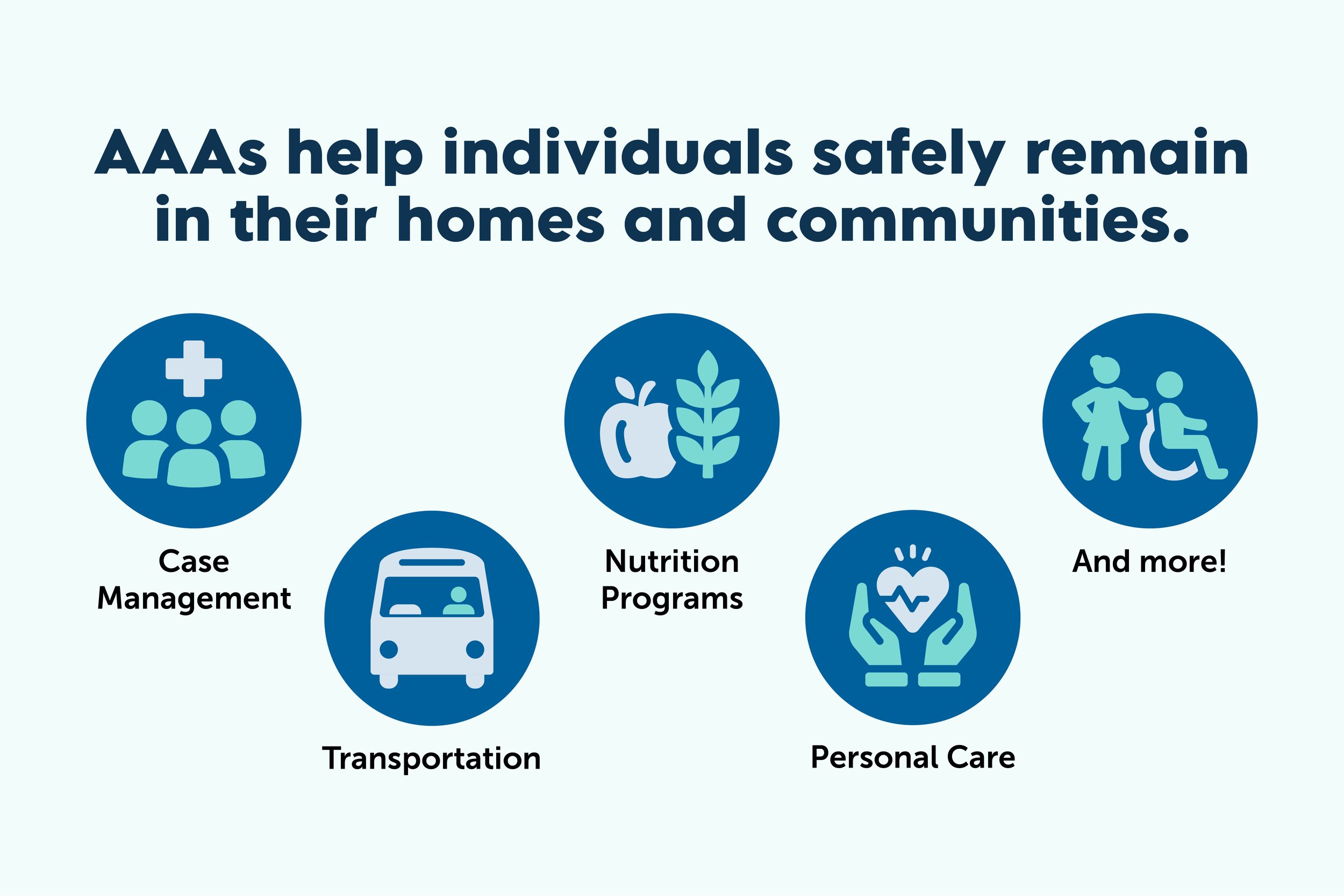Local Expertise, Lasting Impact: AAAs as Essential Partners in Integrated Care for Dually Eligible Beneficiaries
Area Agencies on Aging (AAAs) provide support to their community’s populations of older adults, people with disabilities, and caregivers by providing services and connecting them to resources that help address their health and social needs. While the activities of individual AAAs vary, their role may include connecting individuals with housing resources and home-delivered meals, providing impartial information on Medicare and Medicaid options, and supporting care management activities. AAAs play a vital role helping individuals to safely remain in their homes and communities as they age.
This blog post addresses opportunities for AAAs to partner with health plans that serve dually eligible beneficiaries.
AAAs and Integrated Care for Dually Eligible Beneficiaries
Dually eligible beneficiaries, individuals enrolled in both Medicare and Medicaid, tend to have higher and more complex needs than individuals who are only enrolled in one program. For example, 48% of dually eligible beneficiaries had at least one limitation in activities of daily living, compared to 23% of their Medicare-only peers. Dually eligible beneficiaries must navigate two separate health systems to access the full array of available benefits and can benefit from assistance in coordinating care across Medicare and Medicaid services.
Dual eligible special needs plans (D-SNPs) are specialized Medicare Advantage plans that coordinate the delivery of Medicare and Medicaid services for dually eligible beneficiaries. In collaborating with health plans that serve dually eligible beneficiaries, AAAs can use their unique expertise and perspectives to provide care coordination for plan members.
Partnering with Integrated Care Plans
States and D-SNPs have found value in partnering with AAAs to ensure the local knowledge and services offered are reaching dually eligible beneficiaries. Both Indiana and Ohio’s state Medicaid agencies have built programs enhanced by AAAs’ partnerships with health plans, and there are also examples where AAAs work directly with D-SNPs.
Partnering with Plans on Care Transitions. Indiana requires D-SNPs to coordinate care with AAAs to provide integrated health and social services for plan members with complex needs. For example, D-SNPs must coordinate discharge planning with the AAA service coordinators for those members enrolled in Indiana Medicaid’s Aged and Disabled home and community-based services (HCBS) program. The AAA service coordinator can help ensure the member has access to home health services, durable medical equipment, and other HCBS services the member may need. Indiana also requires that D-SNPs refer any member they identify as having strong predictors of needing long-term services and supports to the local AAA. D-SNPs must also participate in twice-monthly care coordination workgroups with AAAs to foster ongoing engagement. By engaging D-SNPs and AAAs in meaningful collaboration, Indiana promotes integration and improves access to services for dually eligible beneficiaries.
Enhancing Waiver Service Coordination. Beginning January 2026, Ohio will require fully integrated dual eligible special needs plans (FIDE SNPs) to contract with AAAs to provide HCBS waiver service coordination to eligible members age 60 or older, with options for AAAs to also provide these services to the under-60 population. This extends the current partnership between managed care organizations and AAAs through the MyCare Ohio program, part of a Centers for Medicare & Medicaid Services (CMS) demonstration offering specialized Medicare-Medicaid Plans (MMPs) for dually eligible beneficiaries ending in December 2025. During the demonstration, some MMPs opted to expand the role of AAAs beyond the HCBS waiver population and manage care coordination across the full continuum of Medicare and Medicaid services. This collaboration between MMPs and AAAs is mutually beneficial. The MMPs find value in the local knowledge and HCBS expertise that AAAs have and the AAAs are better able to serve members with access to the data analytics that MMPs provide. Through this partnership, MMPs and AAAs can better address the needs of beneficiaries at risk of inpatient stays and emergency department visits. The MyCare Ohio MMPs will transition into FIDE SNPs at the end of 2025. Under the FIDE SNP program, AAAs will continue to play a key role in managing care.
Creating Innovation in Local Networks. Outside of state requirements, AAAs can proactively explore opportunities to partner with managed care plans and community providers. For example, since 2014, Allegheny County AAA in Pennsylvania has partnered with Highmark Wholecare, a health plan offering Medicaid plans and D-SNPs, to participate in the CMS Community Care Transitions Program (CCTP) pilot. The AAA built a coalition between health plans and hospitals to provide social services and supports to members after hospitalization. The program’s success propelled this model to other hospitals and expanded services. The strong partnership that the AAA built with Highmark Wholecare also catalyzed into new programs, including assisting members to find housing supports.
AAAs are effective partners in improving dually eligible beneficiaries’ experience with, and access to, health care and health-related social needs. Although a 2023 survey found that only 18% of all AAAs contract with health plans serving dually eligible beneficiaries, the examples above show that there are significant opportunities to enhance care and help members stay in the community through state policies, direct contracts, and other potential arrangements.
If your organization is interested in learning more about opportunities to meaningfully involve AAAs in the care of dually eligible beneficiaries, please reach out to Kristal Vardaman.


![Anna Williams [Deputy Director]](https://images.squarespace-cdn.com/content/v1/66902b12f1fed363b0b53399/1749568644903-E0QZ81NIE0K1ZCQIBFRH/Anna+Williams.jpg)
![Kristal Vardaman [Managing Principal]](https://images.squarespace-cdn.com/content/v1/66902b12f1fed363b0b53399/1749580093593-C8BI0BAWRM66131D3K5Z/Kristal+Vardaman.jpg)